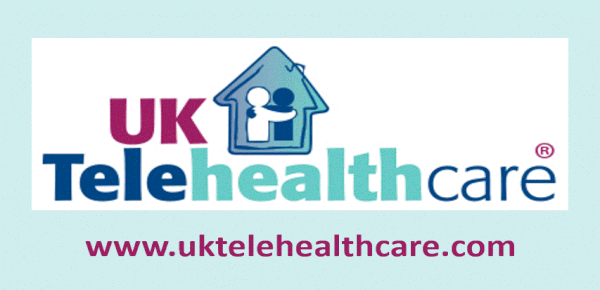 A new and exhaustive report diagnoses the US healthcare patient, pronounces it sick, and the proposed cure involves a “return to first principles”. A new report from researcher Trilliant Health outlines the unsustainability of the current status quo. As of 2023, the US system is the most expensive in the world in absolute terms. It grew from $2.8 trillion in 2012 to $4.9 trillion in 2023 with relatively flat demand and utilization (with 2022 and 2023 skewed because of Covid). In terms of GDP, it was 17.6%, a stunning number that will grow by almost 3 percentage points in the next ten years. The report outlines six trends that are anticipated to affect healthcare, based on data analysis of consumer demand, healthcare supply, and yield–the pricing where they intersect plus regulation and market incentives (e.g. reimbursement). This is a 30,000 foot view of an incredibly detailed report (details below):
A new and exhaustive report diagnoses the US healthcare patient, pronounces it sick, and the proposed cure involves a “return to first principles”. A new report from researcher Trilliant Health outlines the unsustainability of the current status quo. As of 2023, the US system is the most expensive in the world in absolute terms. It grew from $2.8 trillion in 2012 to $4.9 trillion in 2023 with relatively flat demand and utilization (with 2022 and 2023 skewed because of Covid). In terms of GDP, it was 17.6%, a stunning number that will grow by almost 3 percentage points in the next ten years. The report outlines six trends that are anticipated to affect healthcare, based on data analysis of consumer demand, healthcare supply, and yield–the pricing where they intersect plus regulation and market incentives (e.g. reimbursement). This is a 30,000 foot view of an incredibly detailed report (details below):
- Price sensitivity and affordability concerns are reshaping demand. Prices have increased 54.5% from 2009 to 2023, compared to a 45.7% increase in overall consumer prices. Average annual insurer commercial plan premiums are up 85.7% between 2010 and 2024.
- Stakeholders are slow to adapt to changing demographic and lifestyle trends. US life expectancy is flat, and the average person is living 12.5 years in poor health. This is compared to residents of the 38 OECD countries, who on average live four to eight years longer and in better health. Avoidable mortality rates per 100,000 are over 100 points higher. Chronic disease mortality among those aged 18-44 increased by 6.4% in the past six years, led by chronic liver diseases. US population is also shifting to the ‘sunbelt’ stages, fleeing California and New York State.
- The healthcare delivery system incentivizes specialty care intervention instead of primary care prevention. This is driven by the rise of chronic conditions including “long Covid”, GI diseases, and behavioral health, as well as the low supply of primary care physicians. Retailers and Amazon, after a ‘gold rush’ starting about five years ago, are either exiting, pivoting, or scaling back. Somehow behavioral health volume increased by 43.7% between 2018 and 2024, despite psychiatry not even showing up in their physician specialty analysis. New drug development also is increasingly targeting chronic and rare diseases, with about one-third targeting cancer.
- Fraud, waste and abuse are pervasive in U.S. healthcare. To no one’s surprise, rates by CPT codes vary widely and wildly, insurance payers have favored systems, and hospital administration gets more money than direct patient care. Expensive EHRs aren’t delivering on workflow and patient portals. Brokers and PBMs add to cost and complexity.
- The transition to alternative care settings and therapies is accelerating. In-patient care innovations tend to start in the hospital and then migrate outward to outpatient settings such as ambulatory surgical care centers. Behavioral health, for instance, has migrated to telehealth. Patients with mental health needs who are well managed and include telehealth tend to have have far more in-patient utilization than unmanaged patients, regardless of utilization level. GLP-1 utilization increased 744.6% between 2018 and 2023, and is increasingly being prescribed and delivered via virtual care providers such as Hims & Hers, Ro, LifeMD, and WW in deals with the pharma companies. Rural health continues to shrink and cut inpatient services.
- If the industry cannot deliver value for money and employers will not demand it, the government is prepared to force it. Their effectiveness in this is perhaps a debatable point, since CMS’ value-based care programs such as MSSP and REACH have not really reformed the system, contained costs, nor spread as practices. The profitability of insurers has also deflated. The Trump Administration’s moves with Pfizer on ‘most favored nation’ pricing for Medicaid and direct sales fit here. Coupled with drug manufacturers’ selective desire to bypass PBMs and go direct, there’s a trend here to cut out the middleman.
As to telehealth, once seen as a cost and supply panacea, since 2020 and the pandemic, volume declined by 32.2%, driven by a 52% decrease in non-behavioral care. What remains is behavioral health, 66.9% of visits in 2024. Even that has declined versus prior year from 70.5%. (Slide 84). Another panacea was supposed to be EHRs but they tend to be closed systems, non-interoperable, and another increaser of complexity.
Their conclusion is that healthcare is at a crossroads–no surprise–and that healthcare is now locked into a “doom loop” (Slide 110). Prices increase, the financial strain on patients, providers, payers, and employers increase, patients enter the system sicker, access decreases, and the inefficiency increases geometrically. Their call (Slide 111) is for a return to see what is what is essential and necessary. “At its core, the healthcare system is intended to connect patients with providers for medical care.” Our currently redundant and complex system (see the nightmare that is Slide 8) cannot do that.
The Trilliant Health report is available for download here. Release.






Most Recent Comments